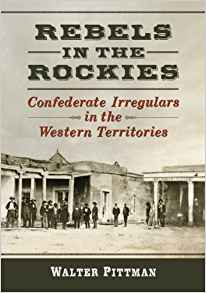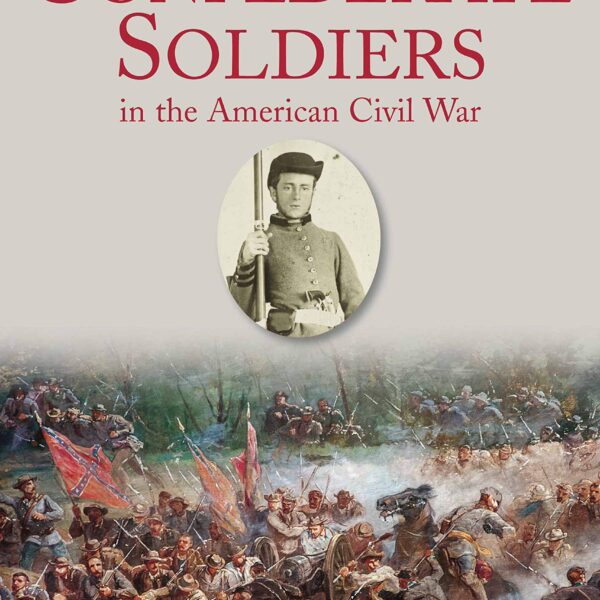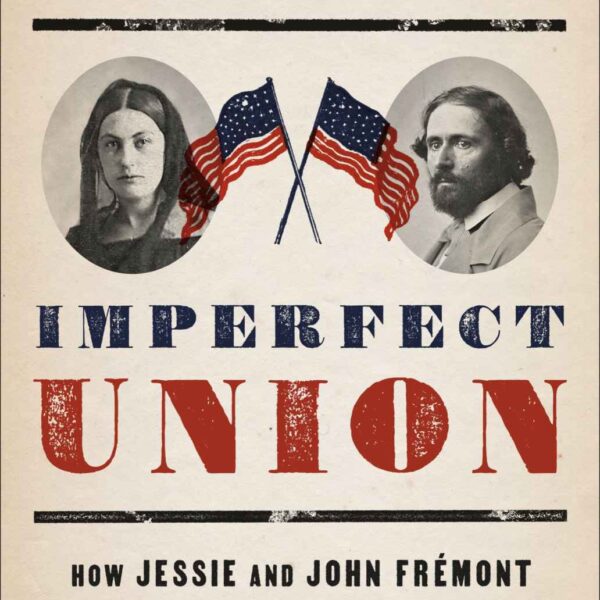Rebels in the Rockies: Confederate Irregulars in the Western Territories by Walter Earl Pittman. McFarland & Company, Inc., 2014. Paper, ISBN: 978-0786478200. $39.95.
 In 2000, in an article in Civil War History, Daniel E. Sutherland announced that the guerrilla war, “far from being a sideshow, was a crucial part of the larger war.” In the intervening seventeen years, scholars have produced an impressive number of articles, monographs, and dissertations dealing with guerrillas and the guerrilla war. Despite this ever-growing body of scholarship, there is a lacuna in the literature of the guerrilla war—a sideshow to the sideshow one might say: guerrillas in the Western Territories, specifically New Mexico, Colorado, and Arizona. Walter Earl Pittman, the author of New Mexico and the Civil War, turns his attention to Confederate irregulars in these territories and discusses how they fought, both as guerrillas and as regular soldiers.
In 2000, in an article in Civil War History, Daniel E. Sutherland announced that the guerrilla war, “far from being a sideshow, was a crucial part of the larger war.” In the intervening seventeen years, scholars have produced an impressive number of articles, monographs, and dissertations dealing with guerrillas and the guerrilla war. Despite this ever-growing body of scholarship, there is a lacuna in the literature of the guerrilla war—a sideshow to the sideshow one might say: guerrillas in the Western Territories, specifically New Mexico, Colorado, and Arizona. Walter Earl Pittman, the author of New Mexico and the Civil War, turns his attention to Confederate irregulars in these territories and discusses how they fought, both as guerrillas and as regular soldiers.
The majority of Pittman’s book is devoted to New Mexico. When John Baylor established the Confederate Territory of Arizona, Baylor recognized that he needed the support of the Hispanic population and “sought to win their approval or at least their acquiescence” (27). On the other hand, when a Confederate army entered the territory, “conditions soon deteriorated to open enmity between the Confederates, almost all Texans, and the native New Mexicans” (27). Pittman analyzes Henry Hopkins Sibley’s invasion of New Mexico and discusses Sibley’s skill in creating and employing clandestine and irregular forces. “Of all the ‘special’ units Sibley created,” Pittman argues, “none were more effective, notorious and mysterious than the Brigands” (44). Who were the Brigands? They were, Pittman asserts, affluent citizens who also identified with the rougher edges of society, self-confident, reckless, and, on the whole, “extreme individualists” (45). Pittman argues that the men who joined the Brigands “were probably more motivated by the high pay of the Brigands, adventure and anti-government attitudes than they were by any political ideas” (77). But this contention is problematic because, as he states several pages earlier, many of these men had been involved with filibustering expeditions in the 1850s. In sum, Pittman argues against the interpretation of the Brigands, advanced by some historians, as the “dregs of society.” After Sibley retreated from New Mexico, Pittman contends that some of the Brigands fought as regular soldiers in Louisiana with General Richard Taylor’s army during the Red River Campaign.
Pittman also provides an overview of Confederates in Colorado, noting that, “cells of secret Southern sympathizers were scattered through the mining camps. They were linked together in several paramilitary groupings, and attempts were made to organize, equip and train them as soldiers” (132). Despite this contention, Pittman overemphasizes vigilantism on the part of Union authorities and contends that the Union troops spent most of their time chasing imaginary dragons. Furthermore, in a troubling chapter on Kansas and Missouri, Pittman places the responsibility for violence in Kansas and Missouri solely at the feet of John Brown and neglects recent work by Louis DeCaro and Paul Finkelman that suggests exactly the opposite. Pittman focuses too heavily on “Jayhawker depredations” (140). To be sure, Jayhawkers were brutal, but if historians such as Michal Fellman and Daniel Sutherland have taught us anything, it is that rebel guerrillas in Missouri could easily match, if not surpass, Jayhawker brutality. By way of conclusion, Pittman considers the effect of rebel irregulars and suggests that they “probably resulted in tying down significant Union forces” (222). The twenty thousand men the Union sent to patrol the West might seem like something of a pittance when compared to the two million men in blue uniforms, but those troops undoubtedly could have been more profitably employed in another theater of the war.
Throughout his book, Pittman leaves unexplored themes such as the numerous mentions of rebel irregulars fleeing to Mexico, passing through Mexico, and purchasing and selling supplies in Mexico. At one point, Pittman comments that, after Sibley’s defeat, “[James] Magoffin moved to Chihuahua, where he facilitated and financed Confederate covert operations” (14). At another point, Pittman asserts that “Northerners generally lacked the number of sympathizers and quality agents that the South possessed in northern Mexico” (206). Thus, even though he began with the goal of exploring rebel irregulars in the Rockies, Pittman found a busy world of irregular activity in the United States/Mexico borderlands. Pittman, however, does not really venture beyond the borders of the United States in his book, save for these brief mentions. A wider lens might have led him to explore additional questions. At this time, Mexico was embroiled in the French Intervention and the Liberal government of Benito Juárez fled to the North of Mexico, the same region where so many of the men in Pittman’s book ended up. Did the Union authorities pressure Mexico to do anything about these guerrillas? Did Emperor Maximilian have anything to do with these rebel irregulars, including turning a blind eye to their activities? For that matter, what about neutrality laws? It would not be reasonable to expect Pittman to answer all these questions, but he should be commended for illustrating the richness of this topic.
Rebels in the Rockies, in short, is an intriguing book and worth reading. Pittman successfully illustrates irregular activity in a region that has long been understudied in the scholarly literature. In addition, Pittman deserves credit for his historical detective work. He pieced together information about irregulars to reconstruct their operations and their worlds. Finally, as stated above, Pittman demonstrates that this is a fruitful subject, and that historians should not only pay attention to irregular activity in the Rockies but, more broadly, to irregular activity in the United States/Mexico borderlands. This is a book that will appeal to anyone interested in the Civil War, Western history, and guerrilla and irregular warfare.
Evan C. Rothera teaches history at The Pennsylvania State University and is at work on his first book.




